Gonorrhea is a sexually transmitted infection (STI) caused by the gram-negative bacteria Neisseria gonorrhoeae (N. gonorrhoeae). Gonorrhea may be asymptomatic but commonly manifests as cervicitis or urethritis with less common presentations such as proctitis, conjunctivitis, or pharyngitis. Without antibiotic treatment, complications can occur. Complications for men may include epididymitis, prostatitis, balanitis, and periurethral abscess. Women may develop pelvic inflammatory disease, which can cause perihepatitis and fertility issues. Disseminated gonococcal infection is associated with fever, dermatitis, tenosynovitis, septic arthritis, and (rarely) endocarditis or meningitis. Gonorrhea diagnosis is made by microscopy, culture, or nucleic acid amplification tests. Management generally involves ceftriaxone, but treatment with doxycycline should be pursued if a coinfection with Chlamydia trachomatis (C. trachomatis) is not excluded.
Last updated: Mar 4, 2024
Gonorrhea Gonorrhea Gonorrhea is a sexually transmitted infection (STI) caused by the gram-negative bacteria Neisseria gonorrhoeae (N. gonorrhoeae). Gonorrhea may be asymptomatic but commonly manifests as cervicitis or urethritis with less common presentations such as proctitis, conjunctivitis, or pharyngitis. Gonorrhea is caused by the pathogen Neisseria gonorrhoeae Neisseria gonorrhoeae A species of gram-negative, aerobic bacteria primarily found in purulent venereal discharges. It is the causative agent of gonorrhea. Neisseria ( N. gonorrhoeae N. gonorrhoeae A species of gram-negative, aerobic bacteria primarily found in purulent venereal discharges. It is the causative agent of gonorrhea. Neisseria):
Risk factors:
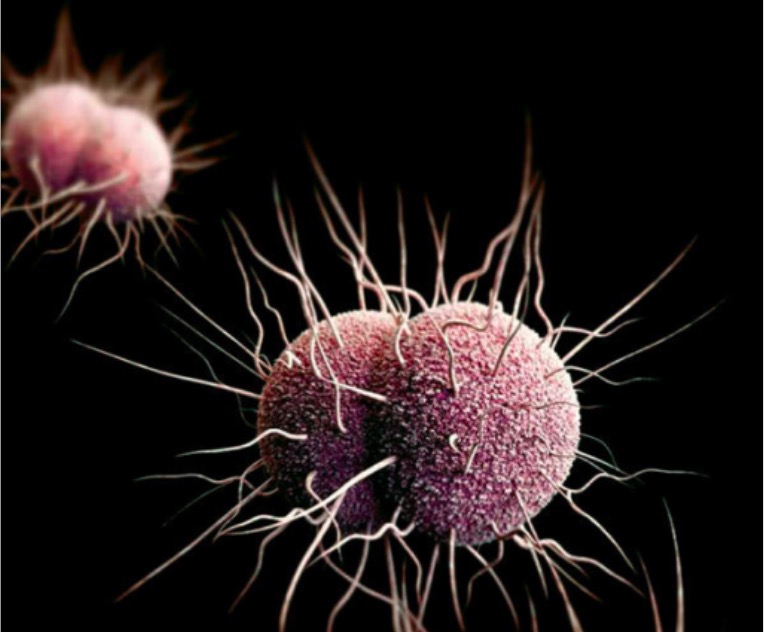
A 3-dimensional (3D) computer-generated image of N. gonorrhoeae bacteria:
Typical diplococci and multiple pili
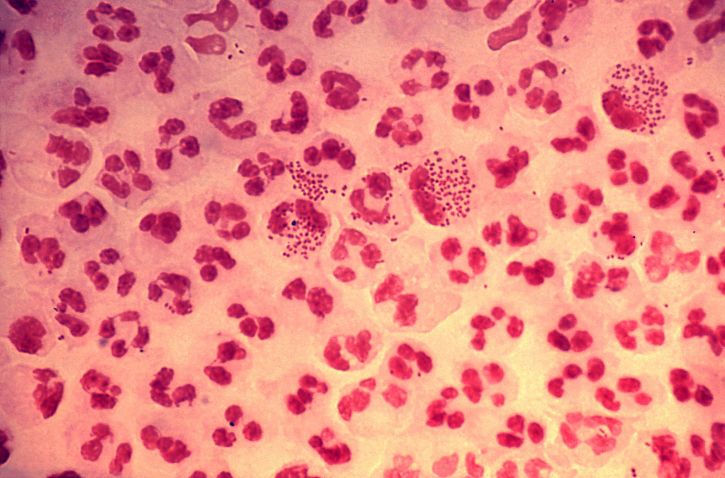
Gram stain of purulent exudate containing N. gonorrhoeae:
N. gonorrhoeae are seen as gram-negative diplococci. As seen here, the bacteria usually provoke a marked neutrophilic response with several neutrophils containing many phagocytized bacteria. Although not present in the image, gram staining would also reveal the bacteria within infected epithelial cells.
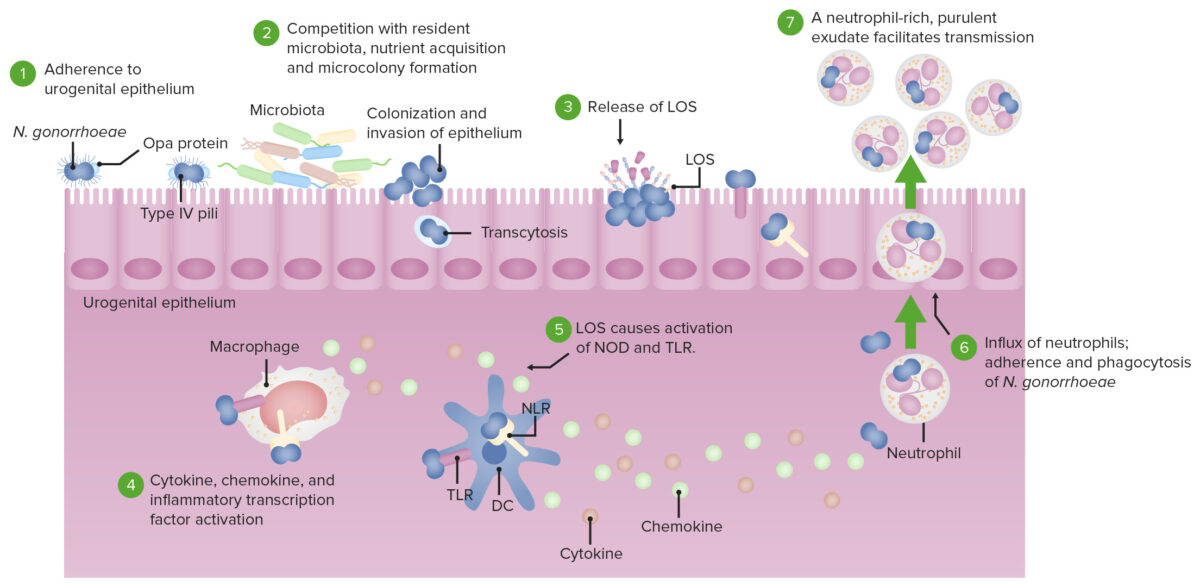
Pathogenesis of N. gonorrhoeae:
DC: dendritic cell
LOS: lipooligosaccharide
TLR: toll-like receptor
NOD: nucleotide-binding oligomerization domain-containing protein
NLR: NOD-like receptor
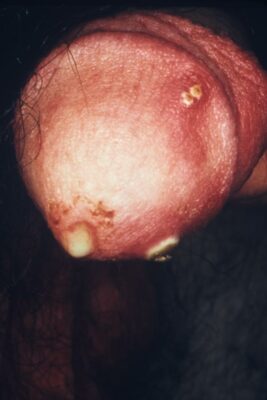
Purulent penile discharge due to urogenital gonorrhea infection
Image: “4065” by CDC. License: Public Domain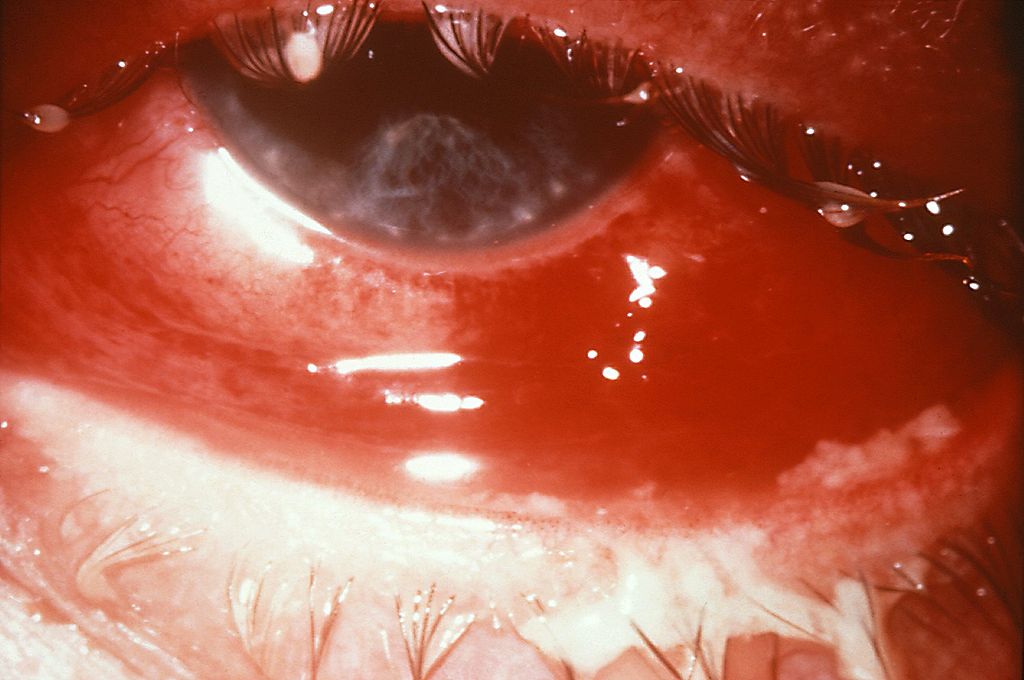
Hyperemia, chemosis, and purulent discharge due to gonococcal conjunctivitis:
The patient developed partial blindness as a result of the infection.

Close-up view of a gonococcal lesion on the skin of a patient’s arm:
A gray pustule associated with disseminated gonococcal infection
Newborn Newborn An infant during the first 28 days after birth. Physical Examination of the Newborn infections Infections Invasion of the host organism by microorganisms or their toxins or by parasites that can cause pathological conditions or diseases. Chronic Granulomatous Disease:

A newborn presenting with gonococcal ophthalmia neonatorum, caused by a maternally transmitted gonococcal infection.
Image: “Gonococcal ophthalmia neonatorum” by CDC/J. Pledger. License: Public DomainAfter the neonatal period:
Gonorrhea Gonorrhea Gonorrhea is a sexually transmitted infection (STI) caused by the gram-negative bacteria Neisseria gonorrhoeae (N. gonorrhoeae). Gonorrhea may be asymptomatic but commonly manifests as cervicitis or urethritis with less common presentations such as proctitis, conjunctivitis, or pharyngitis. Gonorrhea is diagnosed based on laboratory assessments that identify the presence of N. gonorrhoeae N. gonorrhoeae A species of gram-negative, aerobic bacteria primarily found in purulent venereal discharges. It is the causative agent of gonorrhea. Neisseria.
In addition to the laboratory evaluations above, the following testing may be performed in patients Patients Individuals participating in the health care system for the purpose of receiving therapeutic, diagnostic, or preventive procedures. Clinician–Patient Relationship suspected of having disseminated gonococcal infection:
Workup for disseminated gonococcal infection should be considered in at-risk individuals presenting with arthralgias that are worrisome for septic arthritis Arthritis Acute or chronic inflammation of joints. Osteoarthritis, especially when vesiculopustular skin Skin The skin, also referred to as the integumentary system, is the largest organ of the body. The skin is primarily composed of the epidermis (outer layer) and dermis (deep layer). The epidermis is primarily composed of keratinocytes that undergo rapid turnover, while the dermis contains dense layers of connective tissue. Skin: Structure and Functions lesions are also present.
Antibiotic management:
| Guideline | Antibiotic options |
|---|---|
| WHO[15,16] | |
| CDC[13] |
Ceftriaxone
Ceftriaxone
A broad-spectrum cephalosporin antibiotic and cefotaxime derivative with a very long half-life and high penetrability to meninges, eyes and inner ears.
Cephalosporins:
|
| BASHH[17] | Ceftriaxone Ceftriaxone A broad-spectrum cephalosporin antibiotic and cefotaxime derivative with a very long half-life and high penetrability to meninges, eyes and inner ears. Cephalosporins 1 g IM once |
| Ciprofloxacin Ciprofloxacin A broad-spectrum antimicrobial carboxyfluoroquinoline. Fluoroquinolones 500 mg orally once | |
| IUSTI[18] |
Additional measures: